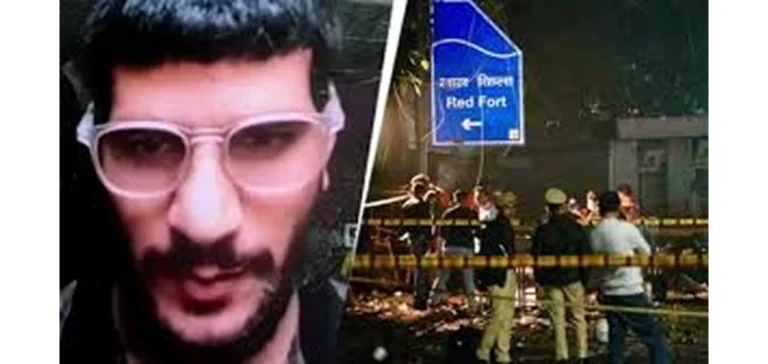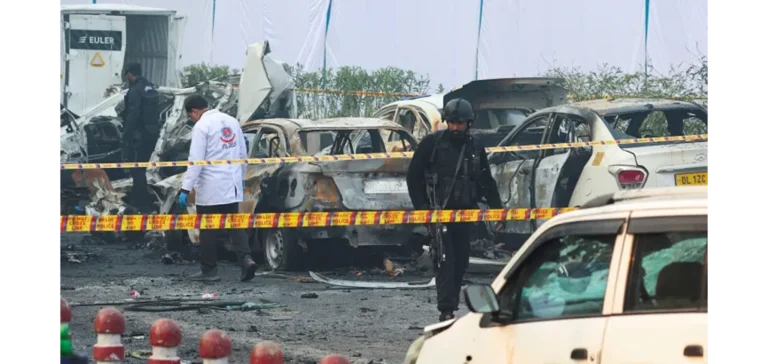
Srinagar, November 12, 2025: Security forces in Jammu and Kashmir have intensified their operations across the Valley, launching widespread raids and searches aimed at dismantling what officials describe as a “terrorist support network.” Over the past week, the Kashmir Police, along with the Army and other security agencies, have carried out coordinated actions at hundreds of locations — from Kulgam and Anantnag in South Kashmir to Sopore and Ganderbal in the north.
According to officials, the latest phase of the Kashmir Police raids began on November 12, with more than 200 searches conducted at suspected hideouts of banned Jamaat-e-Islami (JeI) members and their associates. Police said incriminating materials, digital devices, and documents were seized during the operations, and several individuals have been detained for questioning. Authorities stated that these actions are part of a sustained effort to “dismantle the terror ecosystem” operating at the grassroots level.
While the latest raids in Kulgam and other districts have drawn widespread attention, the events of November 12 are part of a much broader sequence of developments stretching across multiple states. Understanding the timeline behind these Kashmir raids is essential to grasp the full picture.
Timeline of Key Events Leading Up to the Raids
November 7, 2025 – Saharanpur Arrest: Jammu and Kashmir Police, working with Uttar Pradesh authorities, arrested Dr. Adeel Ahmad, a Kashmiri doctor posted in Saharanpur, for allegedly pasting posters in Srinagar promoting the banned Jaish-e-Mohammed (JeM) group. This arrest indicated that networks linked to Kashmir were operating beyond the Union Territory’s borders.
November 9–10, 2025 – Faridabad Anti-Terror Raids: In one of the most significant breakthroughs, a joint team of Haryana Police and national agencies raided several locations in Faridabad, seizing over 360 kg of ammonium nitrate and detaining three doctors suspected of being part of a “white-collar” terror module. Another suspect, Dr. Umar Mohammad from Pulwama, reportedly went underground after 2,900 kg of explosives were discovered. Investigators believe this network was connected to a car bombing near Delhi’s Red Fort, exposing a wider terror link between Kashmir and other northern states.
November 10, 2025 – Initial Kashmir Raids: In response to these findings, J&K Police launched the first round of coordinated searches across several districts. More than 100 people — including former militants and sympathizers — were detained. Raids were reported in both the Kashmir Valley and Jammu division, targeting suspected overground workers (OGWs) and financial supporters of banned groups.
November 11, 2025 – Region-Wide Crackdown: By the weekend, the crackdown expanded significantly. As reported by The Tribune and NDTV, around 1,500 individuals were detained in massive search operations across Anantnag, Shopian, Sopore, and other districts. Officials described these actions as part of a “sustained campaign to cut off terror logistics and communication channels.”
November 12, 2025 – Latest Raids in South Kashmir: The latest Kashmir Police raids were carried out early on November 12, focusing primarily on the homes and offices of banned Jamaat-e-Islami cadres and their supporters. Searches also took place in Awantipora, Ganderbal, and Sopore, reflecting a Valley-wide sweep aimed at disrupting any remnants of organized terror support.

Why the Broader Timeline Matters
Focusing solely on the November 12 raids risks overlooking the underlying causes and triggers that led to them. The Kashmir raids are not isolated incidents but rather a continuation of nationwide actions responding to credible intelligence inputs and cross-border linkages.
- Contextual Understanding: Connecting the raids in Faridabad and Saharanpur with those in Kashmir reveals a consistent pattern. Investigations suggest that certain white-collar professionals, including medical practitioners, were allegedly exploited to facilitate banned organizations — making the crackdown both preventive and investigative in nature.
- Accuracy and Depth: Covering the full sequence ensures factual accuracy. News agencies like NDTV and The Indian Express confirm that the November 12 searches followed intelligence gathered during earlier raids, highlighting the coordinated nature of these efforts.
- Reader Clarity: A chronological narrative helps readers understand how events unfolded step by step — from arrests outside Kashmir to raids within it. This makes the story more coherent, informative, and transparent.
- SEO and Authority: From a digital perspective, comprehensive coverage with verified sources enhances the article’s credibility and discoverability. Keywords such as Kashmir Police raids, anti-terror operations, and Jamaat-e-Islami crackdown naturally strengthen search visibility without artificial repetition.
The Bigger Picture
The Kashmir Police raids of November 12, 2025, are part of a continued effort by security agencies to curb militant activity, dismantle support systems, and prevent future incidents. By situating these operations within the wider context — from the arrests in Saharanpur and Faridabad to the crackdown across Jammu and Kashmir — it becomes clear that the ongoing campaign is not an isolated response but a strategic, multi-state initiative.
In the end, context is key. Understanding the timeline behind the Kashmir raids offers a clearer, more factual view of India’s evolving security landscape — one that connects local actions to national security objectives with precision and transparency.



